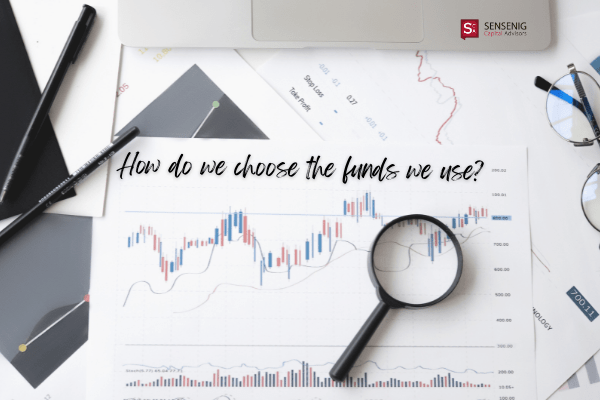When introducing evidence-based investing, we like to begin by explaining why we feel it’s the right strategy for those who are seeking to build or preserve their wealth in wild and woolly markets. Of course sensible strategy is best followed by practical implementation, so it’s also worth describing how we select the funds we typically employ.
Round One: Speculative vs. Evidence-Based Strategy
Our selection process is like a highly personalized, single-elimination tournament. We still consider the entire mutual fund universe and its thousands of possible contenders. But it’s relatively easy to eliminate the vast majority of them in the early rounds, with only the strongest surviving as viable candidates.
In the first round, we want to eliminate speculative fund managers who are playing an entirely different game from what we have in mind.
Speculative: Speculative strategists try to forecast the upcoming performance of securities, sectors or markets and trade accordingly. Individuals may do this by gazing at funds’ “star” ratings or acting on seemingly hot tips from any number of sources. Fund managers may hire well-heeled analysts to probe the universe for secrets about to unfold, and issue buy, sell or hold recommendations accordingly. Either way, these are not exercises that are expected to beat the market, especially after the costs involved in trying.
Evidence-Based: Instead, you and your fund manager can simply hold the universe and be part of its expected expansion. Speculative fund managers may be working very hard at what they’re doing, but it’s an exercise that is more likely to detract from than benefit your goals of building and preserving durable wealth in volatile markets.
By eliminating those who are engaging in speculative tactics from our recommended playlist, we can readily knock out a wide swath of would-be fund selections in the opening round.
Round Two: Passive vs. Evidence-Based Strategy
Once we disqualify speculative fund managers, that still leaves a relatively large (and growing) collection of funds that seek to efficiently capture various dimensions of the market’s expected long-term growth without engaging in seemingly fruitless and costly forecasting.
In this category, you’ll find two broad types of funds:
- Index Funds: Index funds track popular benchmarks such as the S&P 500 or the Barclay’s Global Aggregate, which in turn track particular market asset classes such as U.S. large-cap value stocks or global bonds.
- Evidence-Based Funds: Evidence-based funds seek to wring the highest expected returns with the least expected risk out of similar market asset classes in a more flexible, but still rigorously disciplined manner.
The goals of each are similar, mind you, making it harder to choose among these second-round contestants. Each emphasizes the importance of minimizing wasted efforts and maximizing the factors we can expect to control.
Still, all else being equal we typically favor evidence-based funds for the core of our clients’ portfolios. We feel they are structured to do an even better job at participating in relatively efficient markets over time. By being freed from slavishly following a popular index benchmark and similar restrictive parameters, they can focus directly on the fund management factors that matter the most according to what the evidence has to say on the matter. This includes most effectively capturing markets’ expected returns, while aggressively managing for market risks, minimizing trading costs and dampening some of the noisy volatility along the way.
Round Three: You AND Evidence-Based Strategy
Once we’ve narrowed down our fund choices to a manageable group, the final step is to match the best funds with the most important factor of all: you and your individual goals.
This is one of many reasons why we want you to have a personalized plan in place, preferably in the form of a written Investment Policy Statement. For example, investing heavily in even the best emerging market fund may be a poor choice for you if your greatest goal is to preserve the wealth you already have accumulated. Conversely, an excellent bond fund may be best used in moderation if you are seeking aggressive growth (and are willing and able to take on some market risk to do so).
A Solid Fund Selection Strategy
Bottom line, our final round typically involves forming the remaining contenders into a unified team that is optimized to reflect your unique goals and risk tolerances. Then, you must stick by your carefully constructed portfolio, not just for a game or two, but over the seasons of your life.
When we talk about fund selection, we deliberately emphasize the qualities that decades of empirical and practical evidence have indicated are worth pursuing over time. We explicitly downplay the more typical “play by play” reactionary antics. Star performers – their glittery victories and agonizing defeats – may be interesting to read about and may seem important. But we believe that the best investment selections are the ones that help you achieve your own hopes and dreams by keeping your financial footing on solid, evidence-based ground.



